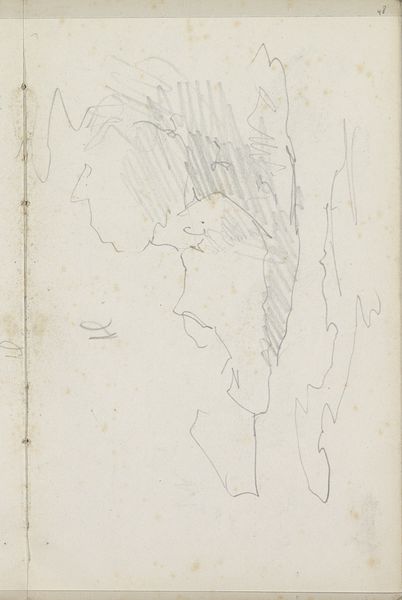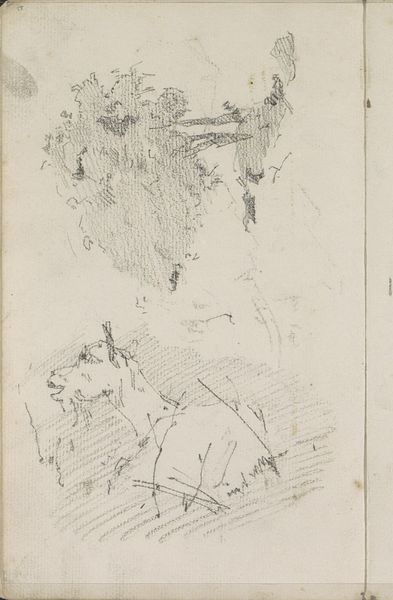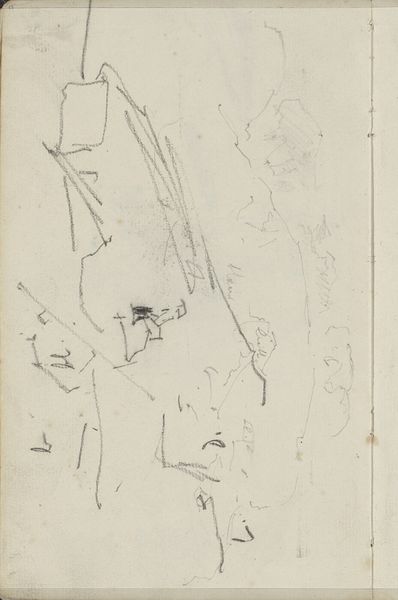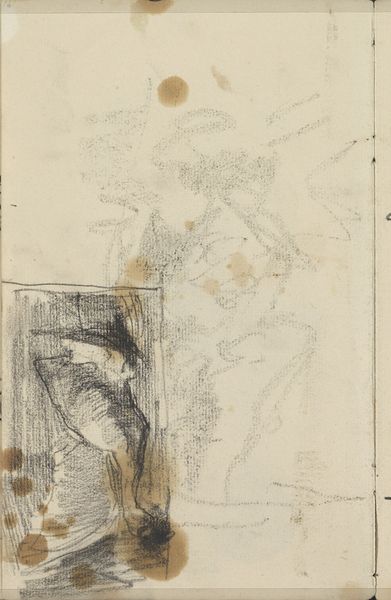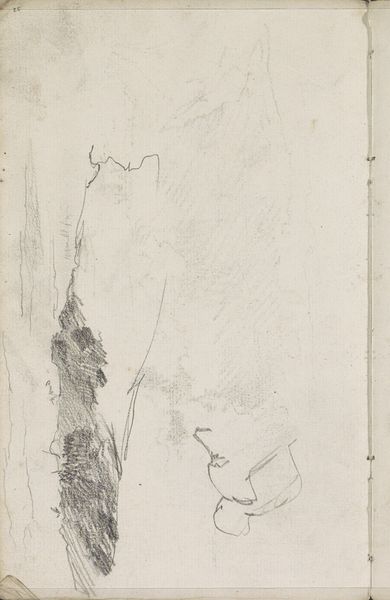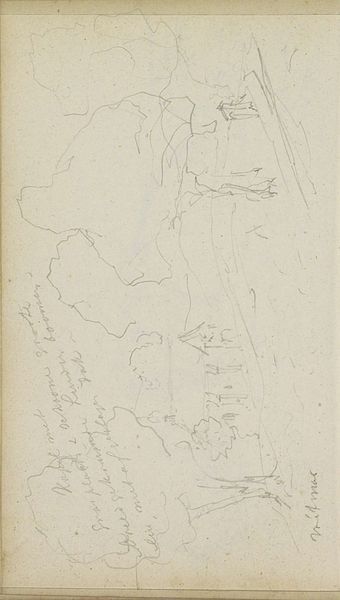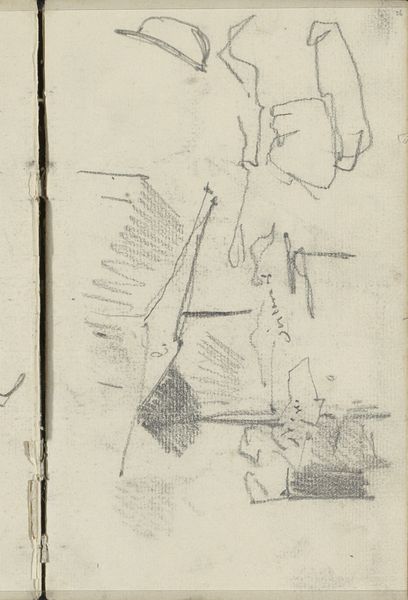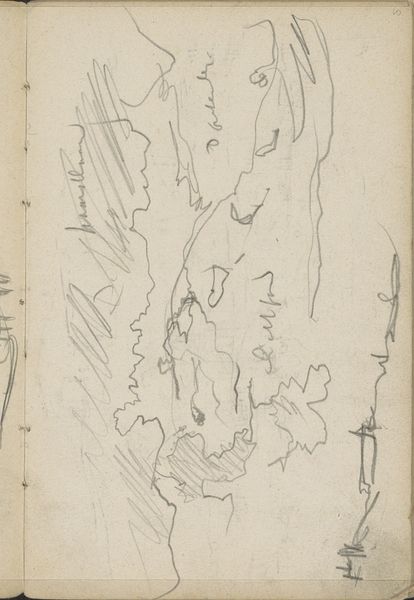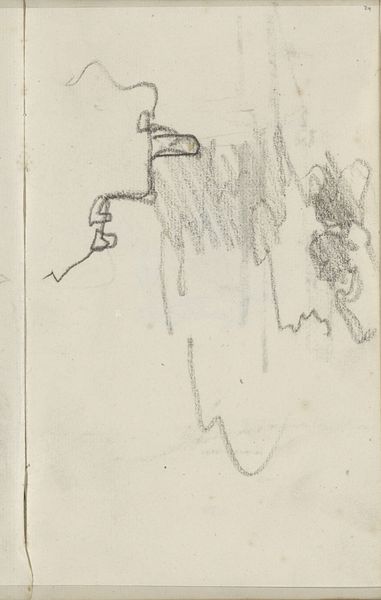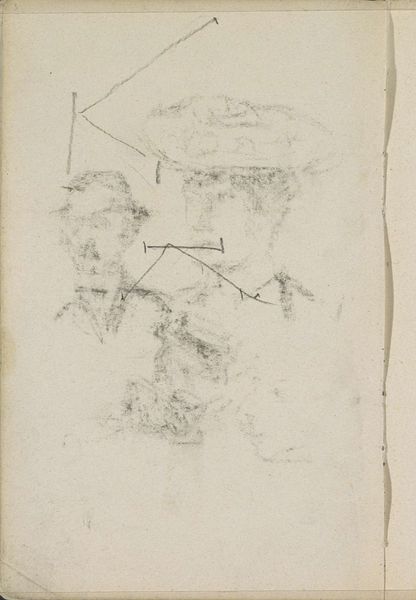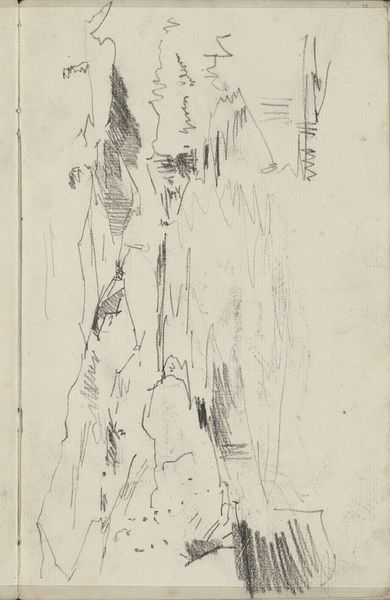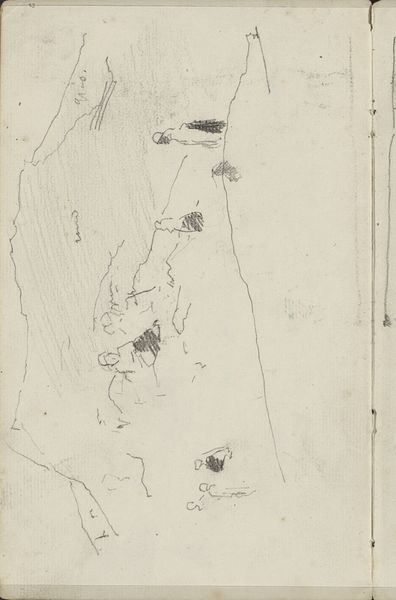
drawing, pencil
#
portrait
#
drawing
#
amateur sketch
#
toned paper
#
light pencil work
#
impressionism
#
pencil sketch
#
incomplete sketchy
#
personal sketchbook
#
ink drawing experimentation
#
detailed observational sketch
#
pencil
#
sketchbook drawing
#
sketchbook art
#
realism
Copyright: Rijks Museum: Open Domain
Curator: The work before us, held at the Rijksmuseum, is a study sheet titled "Studieblad met een hoofd en geiten," dating from 1880 to 1882, crafted by George Hendrik Breitner. Editor: It strikes me as remarkably light and almost ephemeral, a mere suggestion of form. It seems incredibly immediate; you can almost sense the artist's hand moving across the page. Curator: Indeed. It's a drawing executed in pencil, and what’s interesting is the contrast between the detailed rendering of the head and the more loosely sketched goats. One might consider this alongside other late 19th-century realist and Impressionist sketches to explore ideas about representation. Editor: The goats, then, feel like a shorthand, quickly noted observations of their basic shapes and attitudes. Whereas the head, though still a sketch, has a certain level of refinement and anatomical detail suggesting the artist maybe was really trying to know, to understand. Were these farm animals owned by wealthy landowners who commisioned portraits of them or sketches including them? Curator: While a direct commission cannot be known for certain, Breitner found inspiration in observing people from various social strata, which ties into a broader context of increased social awareness and Realist tendencies present in art during this period. We observe here a social commentary by representing an animal's portrait. Editor: Returning to the form, look at the different pencil pressures across the drawing. It's almost as if the pressure mirrors his fluctuating level of engagement. It gives a dynamism, a feeling that the piece is caught somewhere between intent and accident. I can appreciate the interplay between focused, strong lines of the head with fainter almost hesitant outlines of goats. Curator: The use of a toned paper could also be noted to be significant. This tone already establishes the initial value that enabled Breitner to quickly build up both lighter highlights, and shadowy depths. Editor: What it does is invites questions about not just what's there, but about the artistic process itself. It encourages a different kind of looking. Curator: Yes, I quite agree. Through Breitner’s swift notations we gain insight into the formal means through which an image comes to be, its raw elements laid bare on the page.
Comments
No comments
Be the first to comment and join the conversation on the ultimate creative platform.
